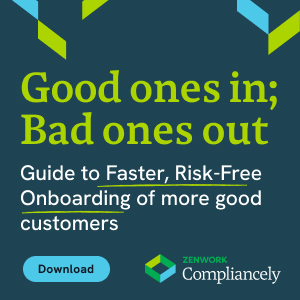10 Chilling Identity Theft Trends Of 2021 That Can Impact Businesses In 2022

Identity theft or identity fraud has been a huge barrier to compliance since the inception of social security.
Be it credit card information, a company’s data, or the credentials to enterprise accessibilities, data has little to no protection.
While the combined synergies of world economies are putting their most innovative measures forward, the dark web and its collateral social engineers, despite the rapid regulations, have found their sweet spot stealing and selling confidential information at pricey deals.
Businesses within the last decade have been susceptible to a variety of identity fraud instances, and have been estimated to lose at least $3.3 billion on an average every year (FTC).
The following will discuss some trends in identity theft that are sabotaging the path to seamless compliance.
1. 33% of citizens in the US have experienced identity theft in some form
And this trend is not restricted to individuals. Even businesses, especially small and medium businesses that do not have a robust identity validation system incorporated, are subject to identity fraud instances.
The figures are higher and more common in the U.S. compared to the statistics in Germany or France, almost doubling the world average.
2. Every year, 15 million Americans become victims of identity theft.
There are two ways to look at this.
1) The identities of the deceased are stolen to create new, false identities, and
2) Duplicate identities of live individuals to fabricate the original identities.
Identity fraud is no longer a “won’t happen to me” scenario, making it more common than you think. And it’s not restricted to people. There could be false entities pretending to be your company to steal data, opportunities, and the goodwill of your brand.
Identity verification automation offered by Compliancely will help you stay on top of identity theft easily and help you validate and verify the real identities of individuals and entities in real-time.
3. Someone becomes the victim of identity fraud every 2 seconds.
Can you believe the speed at which the dark web and its ways are moving? This means as you’re reading this sentence, someone is losing access to their bank account or losing their credit card credentials.
The rate at which identity theft is moving is quite alarming and as a business owner, you need to be aware of the consequences of not protecting your own company’s data.
This is also the right time to incorporate identity validation infrastructure into your ecosystem to steer clear from entities and individuals falsely pretending to be someone else.
4. One out of five people in the EU have experienced identity theft
Identity theft is not only common in the U.S. but also across European countries, such as France, the U.K, and Germany. More than half of the European population was recorded to have been victims of identity theft, and the most common type of identity crime was cyber attacks, through which information was stolen from small businesses and gig workers.
5. Californians are the main target for identity theft
The focus of cybercrime is on the Golden state of the U.S. – California.
California is a hub for gig economy workers, businesses, and other industrial activity. While many small and medium businesses operate online here, the risk of cyberattacks, and specifically compromised data security is a common theme across the state.
The rise of cyber attacks is due to the digitization of businesses and the lack of regulation over unauthorized access to personal/work computers across the state. The payment-network information is stored on digital devices, making it easy to steal the data through unauthorized access.
6. Consumers lost $56 billion to identity fraud in 2021 alone
The FTC estimated a whopping figure of $56 billion combining the losses incurred due to identity fraud instances reported by individuals and businesses. This is an alarming trend across the globe that calls for a meticulous yet streamlined system to prevent identity theft.
Compliancely can be a good start if you’re looking at streamlining your internal processes to prevent onboarding fraudulent profiles that join your ecosystem to steal data or compromise data security.
7. 29% steady growth rate in identity theft complaints reported in the U.S.
The trends in identity theft have gone down from 47% to 29% from 2016 to 2021. However, the number of instances recorded by FTC has increased by 1 million.
Another interesting trend here is that the identity theft instances have increased but the complaints reported over the years have decreased significantly. The fact that over 40% of the victims are not compensated for the losses they incur might be indicative of the decline in identity theft reports.
8. Government benefits applied for/received makeup to 32% of the identity theft cases
Social engineers, sanctioned individuals pretending to be legal civilians, and identity impersonators are well known for their ways to indulge in monetary crimes.
The most common identity crime instance reported across all identity fraud and identity theft complaints is where the perpetrators often steal social security information to get certain government benefits, such as stimulus check deposits, tax credits, and insurance refunds. This was especially high during the second peak of the pandemic where the U.S. government announced hefty stimulus for the unemployed.
9. A total of 318.3 million Americans have been victims of identity theft from 2015 to 2021
Counting the entrepreneurs, business owners, owner-operators, self-employed individuals, and employees, the FTC reported a total of 318.3 million Americans have been victims of identity theft from 2015 to 2021.
The data breach trends call for an urgent review of internal compliance policies of small businesses and gig employers that do not have a robust regulatory compliance policy in order.
Incorporating identity verification solutions, such as Compliancely, will help you steer clear of profiles (employees, partnering entities, gig workers, and associates) with invalid identities and proof.
10. Identity theft and fraud reports in the UK increased by 11% in the first half of 2021
The U.K was reported to observe a surge of 11% in identity theft and identity fraud instances in just the first half of 2021. Experts believe that the common patterns in the identity theft trends suggest that identity crime is not limited or confined to certain geographies and could grow rapidly across the globe.
And this is indeed true.
Identity theft is a crime and the capacity and the severity of this virtual crime has no limit.
Secure your business and your employees by strengthening the internal compliance policies of your business. Incorporate a robust KYC policy to create a barrier to identity theft and implement a productive customer identification process, which fundamentally focuses on due diligence within feasibility and reason. Make use of identity verification powerhouses like Compliancely to accelerate your identity verification operations and validate millions of profiles quickly.
